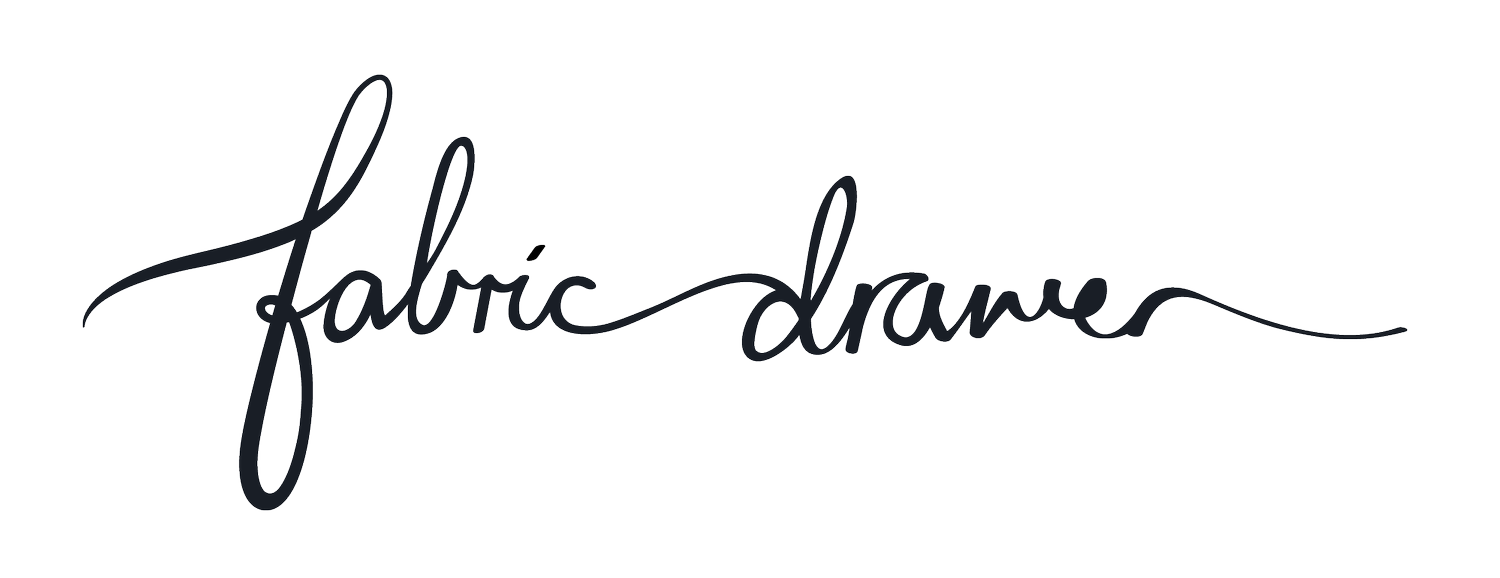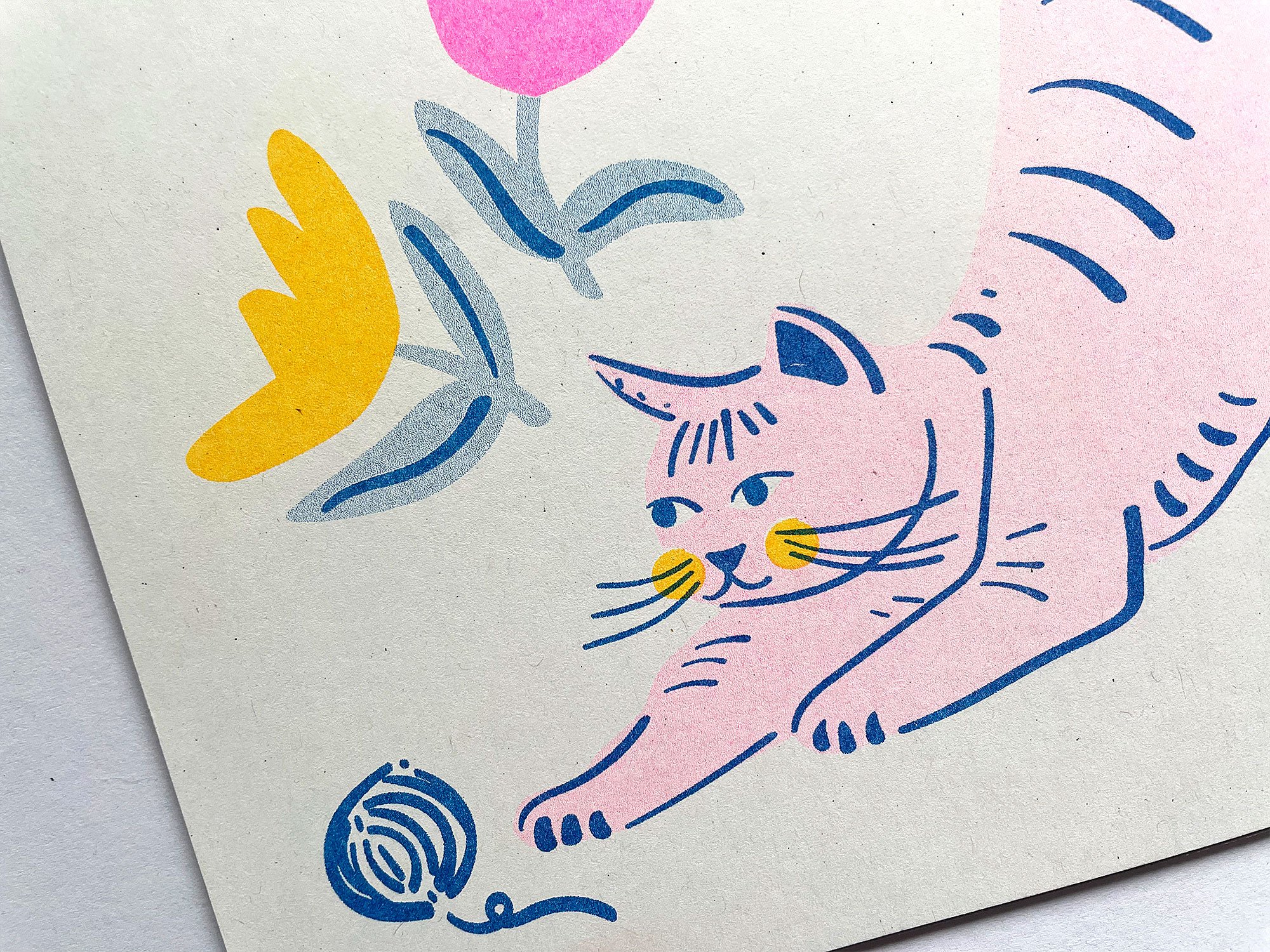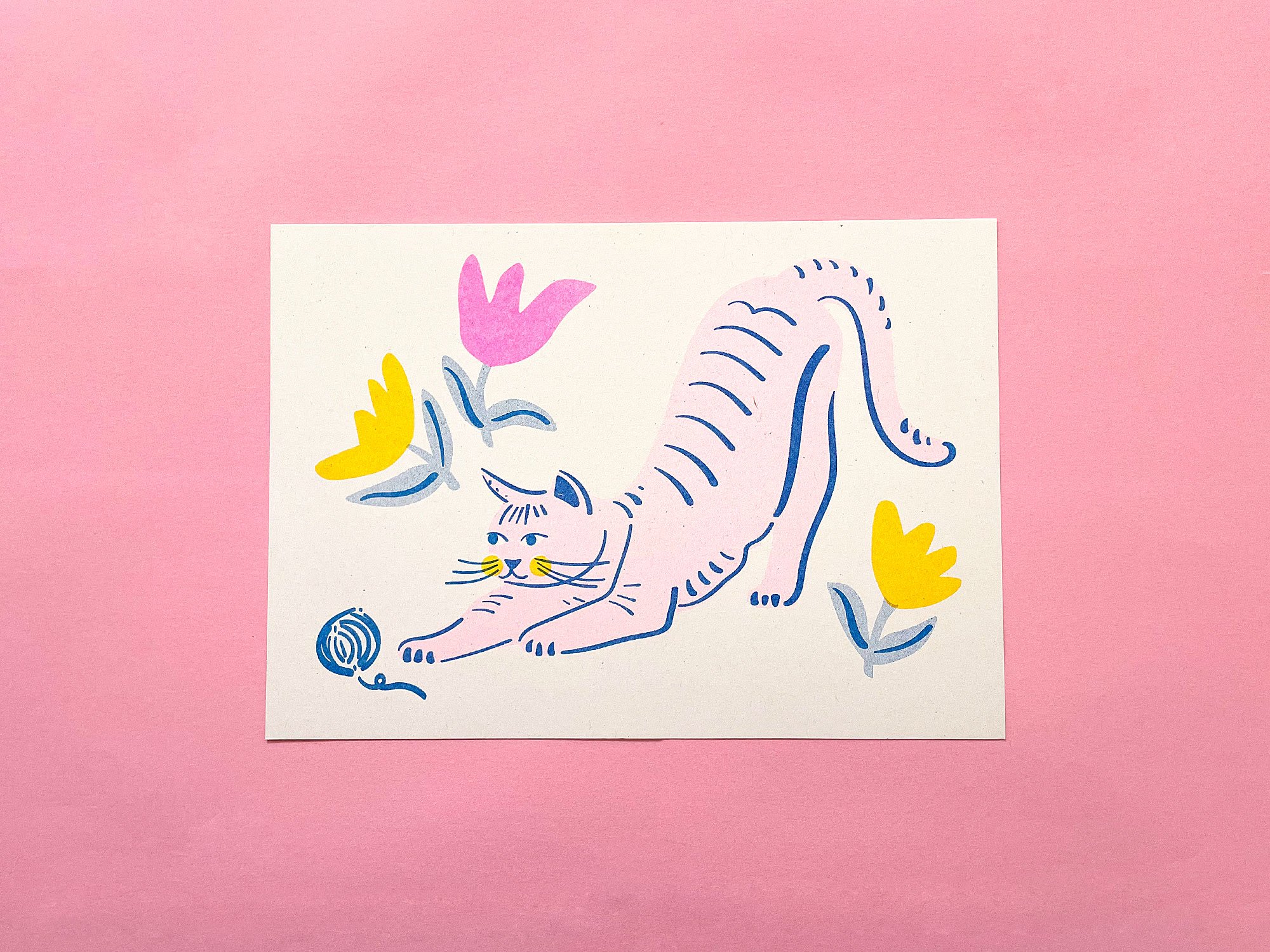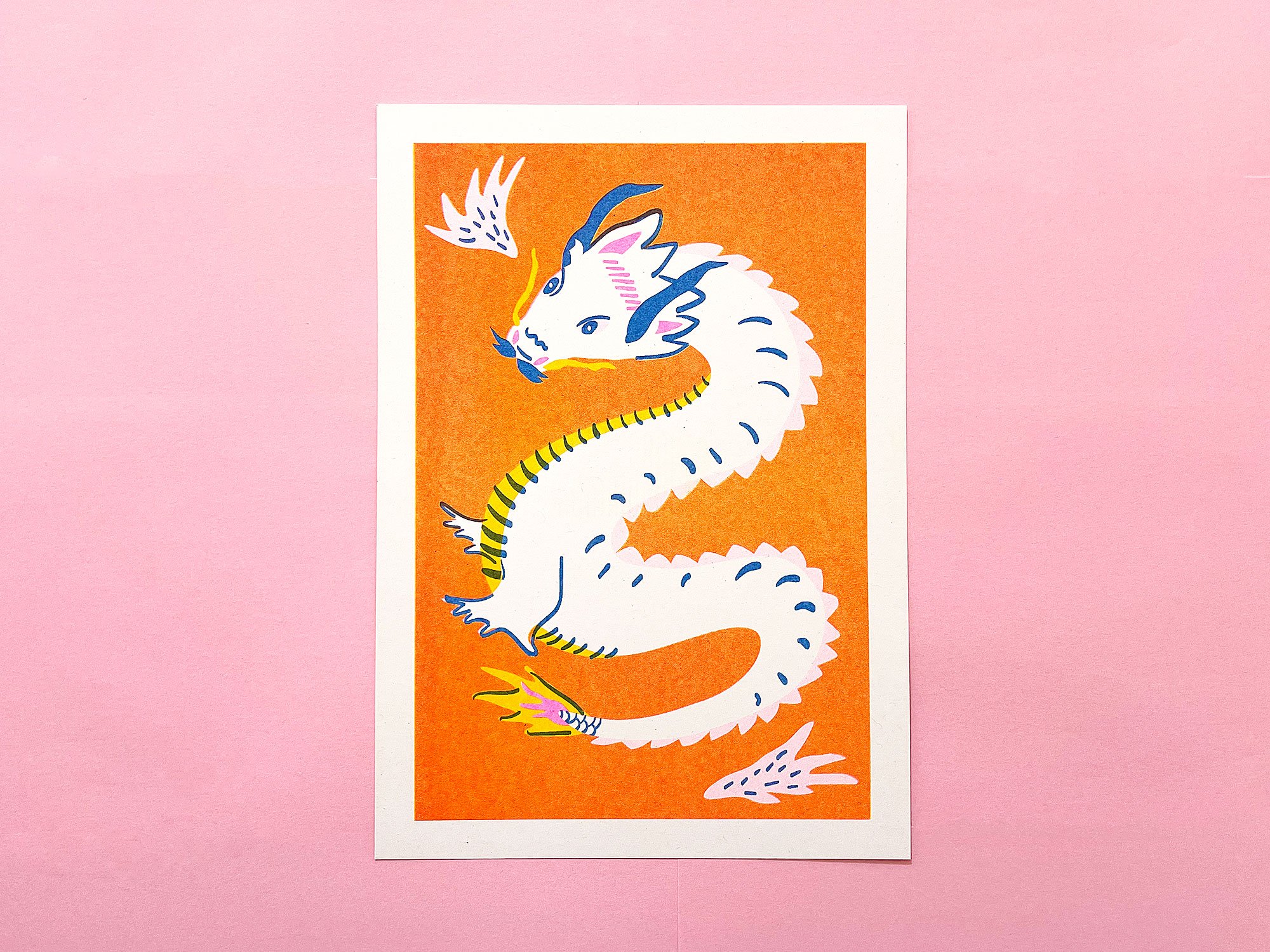Exploring the joys of risograph printing after visiting Japan
Last year our family took a once in a blue moon (is that like a lifetime?!) overseas trip to Japan. Travel was something that I loved and lived for when I was younger that I wanted to share this experience with my kids. It’s something that has become a luxury with two children (now our holidays are camping trips), but after years of saving up, we were finally ready to get on that plane.
I was hoping this trip could get me out of the creative rut I had been feeling for most of 2023. I really don’t know what happened after years of feeling motivated and inspired. I think part of it had to do with things slowing right down. Online sales disappeared and market sales were down. The reality is that having less coming in means less to spend on making more product or doing anything for that matter.
The trip was everything we hoped for. Perfect travelling weather, a good mix of history, tradition and exciting kawaii things for kids. A touch of art (but not a huge amount) and just generally having fun every day doing completely different things. I wanted to come away feeling refreshed and inspired again. Even though I didn’t immediately start creating, I did re-discover my joy of risograph printing. A process that originated in… Japan.
I first discovered the process years ago and found it completely fascinating. As someone who has loved screen-printing at high school, and I did a couple of screen-printing courses in my 20’s, I like the idea of making a print through a stencil, but printing copies of it like a printer. There are also limitations with the colours available, the number of colours you can use per print and how saturated your colours can be. You can overlay two colours to create a new colour, and print shades of a colour. Within these limitations there are possibilities that you don’t think about with regular printing.
Finally, the beauty of riso printing is that each copy is unique in it’s own way. Colours can be slightly different between copies or so so slightly mis-matched. This is what makes each riso print so interesting. And I loved the textured and vibrant finish!
There aren’t many riso printers here in Australia that I even starting looking as far as the UK for options. But I have found a couple that were fantastic to not only help me print, but walk me through how it all works. This isn’t a fast process, testing can take some time and back and forth to get right. One of the challenges of the background orange in the Year of the Dragon print was getting it as saturated as possible. You can’t just print 100% of pink and yellow, the machine won’t like so many ink doing on a larger area of the paper. I also had to find the right percentage of pink to print to find a softer shade of it.
I’ve got two new prints in the shop and plan to print more down the track. Even though I had discovered riso printing before going to Japan, I feel that after coming back I wanted to explore this process more and see what interesting things I can create from it.




